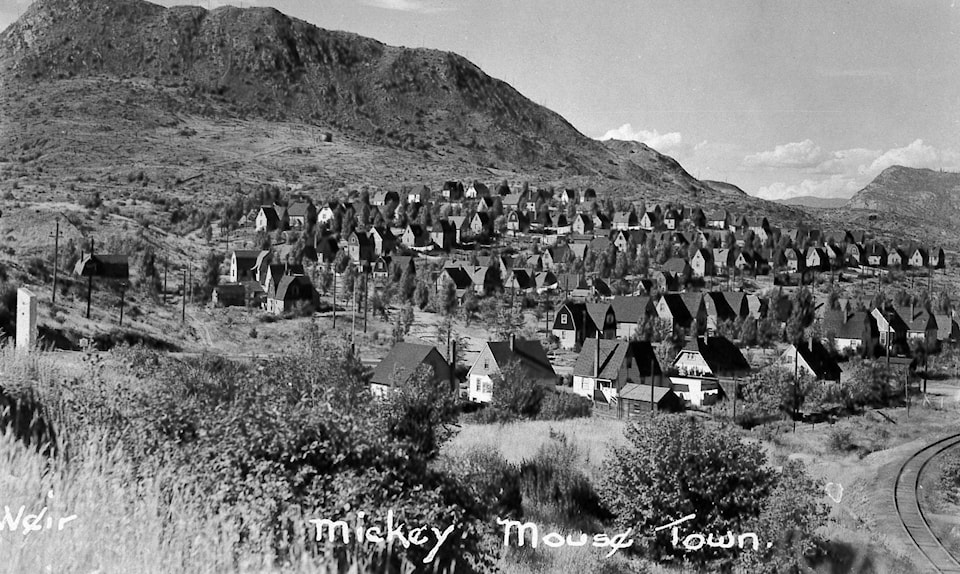A series on West Kootenay/Boundary place names
By Greg Nesteroff
Special to Black Press
Warfield was named for Carlos Warfield (1864-1923), a close associate of Fritz Augustus Heinze, who built the Trail smelter.
Warfield was born in Nebraska, the middle of William and Celia Warfield’s three children. When he was five, his family moved to Montana, where his father was a rancher, and he began school in Helena.
The 1880 census found the family in Butte, where his father was now a city marshall. Carlos was considered one of the “bright scholars” of the local high school and showed an early entrepreneurial flair. At 15, the Butte Weekly Miner reported he was proprietor of a “splendid variety store.” The civic directory called it a tobacco stand.
Warfield attended Missouri University for three years, then returned to Butte to help his father run a livery stable and work as an insurance agent. In 1894, he was elected county assessor on the Republican ticket.
It’s not known exactly how he met Heinze, but they were partners in the smelter at Butte. When Warfield failed to secure re-election as assessor, the Butte Daily Post reported he had “not yet made up his mind what business he will engage in, but is seriously contemplating investing in Trail Creek mines.”
The first sign of Warfield in West Kootenay is in the Nelson Miner of May 30, 1896: “F. Aug. Heinze, Carlos Warfield and Phillips J. Hickey made a flying trip [to Nelson] on Thursday.”
Around that time, Warfield was immortalized with a stop along Heinze’s Columbia and Western Railway, between Trail and Rossland. The Vancouver Daily World of June 12, 1896 announced: “The temporary passenger depot in Rossland has been established … and two other stations are created on the line to be known as Warfield and Lake Mountain.”
When Heinze dispatched Warfield to Ottawa the following year to seek concessions for another of his railways, the Toronto World commented: “Mr. Warfield has extensive interests in Butte, but he seems to greatly prefer the Kootenays as a mining field.”
Warfield was bullish on the Boundary Creek mines as well, claiming the area would “support several towns bigger than any cities now boasted by British Columbia. In fact, this year will witness the greatest development ever known in any country on earth.” His optimism was endearing if unjustified.
While in Ontario, Warfield married musician/socialite Marion Charlotte Whitney (1872-1942) of Prescott, whose uncle James Whitney went on to become premier. Heinze was among the guests. (Warfield was also best man at Heinze’s wedding in 1910.)
Once Heinze sold his railways and the Trail smelter in 1898, Warfield and his bride moved back to Montana. But for years afterward he was caught up in litigation against Heinze and often portrayed as an unsavoury henchman.
At one point, both were cited for contempt of court for extracting ore from a disputed claim. Heinze was fined $20,000 (something like $540,000 in today’s currency) while Warfield was acquitted. Later they were indicted on charges of conspiracy and obstruction of justice for “spiriting away” the books of the United Cooper Company, but the case fizzled.
In addition to his work for Heinze, Warfield had his own mining interests and two cattle ranches in Teton county, but ran into financial problems. In 1911, he became a Canadian citizen and moved to Montreal, where he remained active in mining enterprises. He had no children and no photo of him seems to exist.
Warfield probably didn’t see his namesake railway siding after 1898. In the 1930s, Cominco built a fertilizer plant there and a charming residential area for its workers. The streets were named for famous writers — including Shakespeare, Wordsworth, Byron, Tennyson, Eliot, Whitman, Kipling, Dickens, Thackery, Carlyle, Shelley, Burns, Clemens, and Chaucer — and it was nicknamed Mickey Mouse Town for its houses with sharply peaked roofs. (Construction on the homes began in 1938; the nickname first appeared in the August 1940 edition of Cominco Magazine.)
Warfield incorporated as a village in 1952, at which time residents voted 62 per cent in favour of the name Warfield instead of Annable-Warfield. Annable, previously covered in this series, remains a Warfield neighbourhood.
Although they’re on the same bench, neither the fertilizer operation nor Haley Park are actually within Warfield village limits — both are in the City of Trail. (Amalgamation of Trail and Warfield has been suggested many times but come to naught.)
The Warfield post office opened in 1939, but was renamed Trail sub-office No. 3 within two months. It closed in 1953, then opened and closed twice more in 1966 and 1967. Warfield is one of BC’s few municipalities without its own post office — its mail is addressed to Trail.
